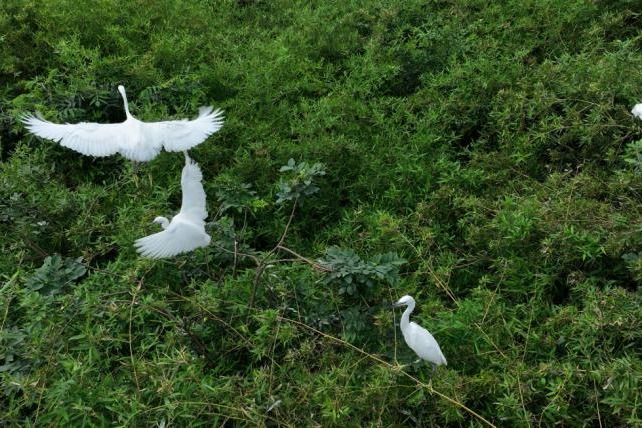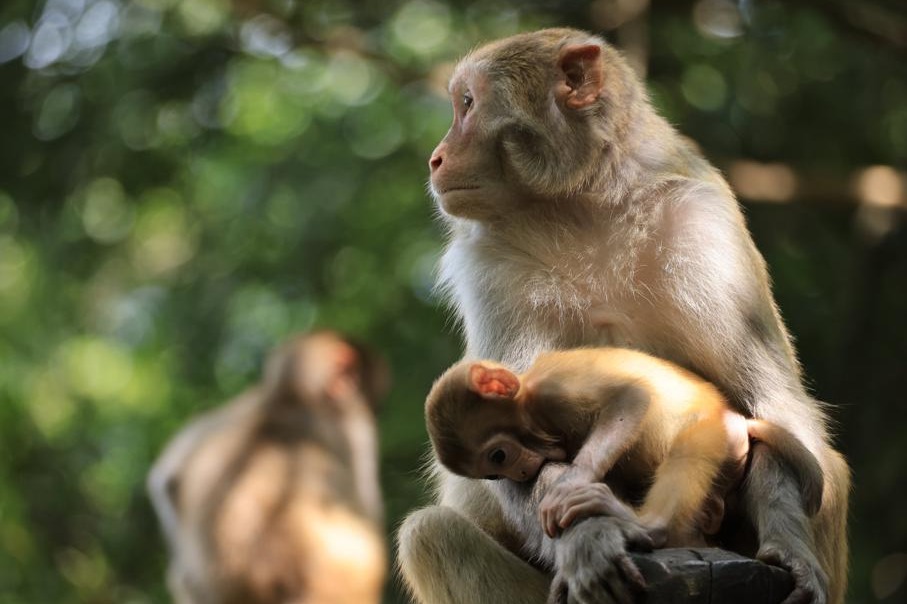Scientists get Yangtze sturgeon to spawn in nature

GUIYANG — The video footage was simple but extraordinary — a tiny, half-translucent grey larva, no bigger than a grain of rice, wriggled out of its egg casing in the shallow waters of the Chishui River in Southwest China's Guizhou province.
To an untrained eye, it might have looked like just another fish hatching. But for the team of scientists watching anxiously, this fragile creature represented something far greater: the first successful natural reproduction of the critically endangered Yangtze sturgeon in the wild in over two decades.
This breakthrough was the culmination of years of painstaking efforts by researchers from the Institute of Hydrobiology of the Chinese Academy of Sciences, the Chinese Sturgeon Research Institute of the China Three Gorges Corporation, and other institutions, organized by the Ministry of Agriculture and Rural Affairs. Their ultimate goal is to revive a species on the brink of extinction.
The Yangtze sturgeon, a nationally protected first-class animal, was once a vital part of the river's ecosystem. However, by the early 2000s, water pollution, overfishing and other factors had pushed it to the edge. In 2022, the International Union for Conservation of Nature declared the species extinct in the wild. The last known natural reproduction occurred in 2000.
Yet, scientists refused to give up. They spent years developing techniques to restore the sturgeon's spawning grounds. They experimented with reconstructing water flow patterns and riverbed conditions, first in controlled environments, then in a side branch of the Yangtze River in Jiang'an county in Sichuan province, in 2023 and 2024.
"Due to the lack of historical data, at first we didn't know what environmental conditions were needed for the reproduction of the Yangtze sturgeon. However, after repeated experiments, this problem has been basically solved," said Liu Huanzhang, an IHB researcher whose study focuses on fish conservation biology.
Those small successes gave them hope — but the real test would be whether the fish could reproduce in a completely natural setting, since no hatched larvae had been found in these experiments. Their eyes turned to the Chishui River, one of the tributaries of the upper Yangtze. Unlike much of the mainstream of the Yangtze, the Chishui is relatively untouched by industrial development and remains undammed in its mainstream.
In early 2025, the team began its most ambitious project. At a site near Chishui city, they meticulously reshaped a stretch of the riverbed, using drones, sonar and hydrological modeling to recreate the exact conditions sturgeons need for spawning.
"We dug channels to mimic natural currents, carefully selected gravel and sand for the river bottom, and created an 8,000 square meter spawning ground tailored to the fish's needs," said Liu Fei, an associate researcher at the IHB.
On April 3, they released 20 adult sturgeons — 10 males and 10 females — into the modified habitat. Then came the waiting. For days, scientists monitored the fish around the clock using underwater cameras and sonar, watching for any sign of mating behavior.
On the night of April 12, the signals lit up — the sturgeons were gathering in the channels. By dawn, the team had spotted fertilized eggs and estimated that over 200,000 eggs were scattered in the spawning ground. Under microscopic analysis, researchers confirmed the eggs were developing normally.
On April 16, the first hatchlings emerged — tiny, wriggling proof that the Yangtze sturgeon could still reproduce in the wild.
The success of the test has proven that mature individuals in the artificially bred Yangtze sturgeon population have the ability to reproduce in the wild, said Liu Huanzhang. "This lays the foundation for the full restoration of the species' natural reproduction in the river."
Liu Fei said: "This isn't just about saving one species. The sturgeon is like a giant in water, and adults may reach over one meter in length. Its survival reflects the health of the entire ecosystem. This success gives us a model for restoring other endangered aquatic species."
The researchers said that they will continue to monitor the growth of the young sturgeons in their natural habitat while refining protection strategies.
Xinhua
- Scientists get Yangtze sturgeon to spawn in nature
- Many takers for 'Wild Man' post in national park
- Top court zooms in on online fraud
- Equipment can convert lunar soil to building material
- Former KMT chairman praises efforts to enhance cross-Strait ties
- Chinese shoemaker finds a snug fit in Ethiopian market





































